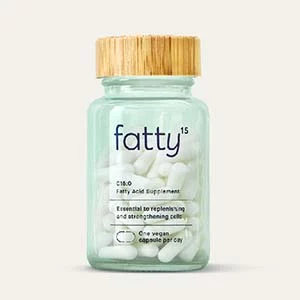The benefits of fasting are well-documented and range far and wide—fat loss, disease prevention, reduced inflammation, less brain fog, and more energy—just to name a few. But what about the effects of fasting on women and their unique cycles, specifically? We talked to the women behind Beeya Wellness for a refresh on the topic…
Intermittent Fasting 101
The term intermittent fasting encompasses several strategies that essentially equate to eating less or less often. One key benefit to fasting is that it activates autophagy, our body’s way of clearing out damaged cells to prevent disease. Studies show that even cases of more severe illnesses have responded well to fasting. While this practice may seem like a miracle cure or an easy approach for anyone to add to their wellness routine, one thing is clear: fasting for men is not the same as fasting for women.
Instead of mindlessly skipping meals (a big problem if you have blood sugar imbalances), intermittent fasting involves intentionally shortening the window of time in which you eat to allow your body to rest and digest during your fasting hours. In some cases, you’re actually limiting the amount of calories you eat. Here’s a quick cheat sheet on a few popular forms of fasting:
Time restricted eating | Eating all calories within a specific window, for example, only having your meals within 12, 8, 6, or 4 hours during the day.
5:2 method | Eating 500 calories 2x a week, and eating normally the rest of the week.
24 hour fasting | Fasting for an entire day, 1-2 times a week.
Alternate-day fasting | This more extreme version of fasting means fasting every other day.
If you have hormonal imbalances, you may be wondering if intermittent fasting is actually safe for your body. The benefits of intermittent fasting can include weight loss, increased energy, gut health, and mental clarity. Which of course you want! However, its broad definition and varying extremes means that not all forms of intermittent fasting are safe for all people, and women with hormonal imbalances in particular have special considerations to take into account when it comes to this lifestyle change.
For those with thyroid conditions, blood sugar imbalances, high cortisol, low cortisol, some cases of infertility, insomnia, and more, chronic undereating can wreak havoc. And, when it comes to weight loss, many women notice that calorie restriction starts as a simple way to lose weight and it quickly turns into the body storing fat in the face of famine.
Fasting For Women In Their Reproductive Years
Experts like Dr. Amy Shah recommend circadian fasting for your cycle. This means you can change your fasting window throughout the month to support your hormones while also eating in alignment with the sun. Here’s how to do it:
Menstrual Phase: Depending on the person, this could be a good time to experiment with your fasting window. Consider a 13 to 14-hour fasting window. For example, you might eat your first meal of the day around 9 am and your last meal before 7 pm.
Follicular Phase: If you’re thinking about more “extreme” versions of fasting, this is the time! Consider a 14 or 16-hour fasting window.
Ovulatory Phase: Depending on your goals, you may want to shorten your fasting window, especially if you want to get pregnant. Dr. Mindy Pelz explains that your body needs glucose and insulin during this stage. Additionally, fasting lowers levels of progesterone.
Luteal Phase: This is when fasting becomes the hardest. Your hunger and need for calories are likely to increase in this phase. Try a 12-hour fasting window. For example, eat all your calories between 7 am and 7 pm.
3 Rules To Live By When Incorporating Intermittent Fasting
01 | What you eat is as important as when you eat. Skipping breakfast only to gorge on snacks or carb-heavy meals defeats the purpose of fasting and can lead to significant cravings. Instead, focus on getting a balance of protein, fat and fiber with each of your meals. We love adding beeya seeds to our meals to get a healthy balance of macros.
02 | Instead of skipping breakfast, try going light on dinner. Evidence shows that eating heavier meals earlier in the day and lighter meals at night can support our fasting efforts, sleep, weight loss, and more.
03 | If you’re underweight, under-muscled, or struggling with major hormonal imbalances, stick to the 12-hour fasting window for now. The 12-hour window is one that pretty much everyone can follow.
At the end of the day, there is no one-size-fits-all approach to health, so listen to your body as you make adjustments and changes. It may help to keep a journal to record your symptoms and energy levels while experimenting with intermittent fasting. Also, make sure to include your doctor for any changes to your eating habits. Intermittent fasting can be a powerful tool on your journey to better health, but the key is tailoring it to your needs and body.
These statements have not been evaluated by the Food and Drug Administration. This product is not intended to diagnose, treat, cure, or prevent any disease. This story is brought to you in partnership with Beeya Wellness. From time to time, TCM editors choose to partner with brands we believe in to bring our readers special offers. All material on The Chalkboard Mag is provided for educational purposes only. Always seek the advice of your physician or another qualified healthcare provider for any questions you have regarding a medical condition, and before undertaking any diet, exercise or other health-related programs.















